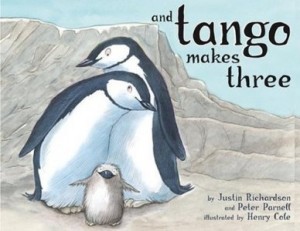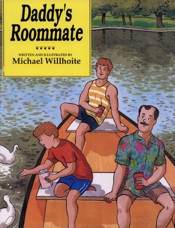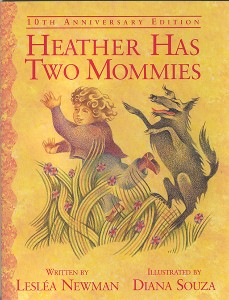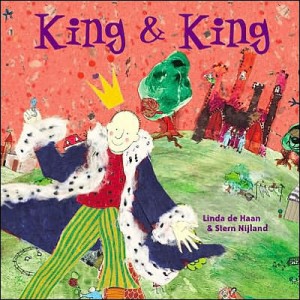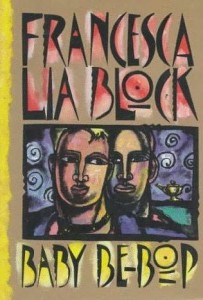Banned Book Week (September 24-October 1 2011) has just concluded, and as an English professor, the concept of banning books baffles my mind. Literature is meant to be an exploration, a journey into worlds, experiences, and ideas we might never experience in our lives. Reading is meant to broaden our horizons, to teach us lessons about love and to inspire growth as a person and as a species.
How can growth be accomplished when groups or organizations exist that constantly attempt to weed out the ideas they don’t want shared with the world?
No one person or group should be allowed that much power, for reading is knowledge and knowledge is power. By attempting to ban books, those groups are endeavoring to keep individuals ignorant, to keep growth stunted to another’s concept of morality. Those people are like a gardner attempting to prune a bonsai tree, to keep it small and weak by clipping this idea or whittling that thought from the collective garden of society.
Libraries are for everyone and should represent the multitudes. When a book is banned, a subset of our societal make up is also lopped off.
Banning books, for any reason, just should not be allowed. If those who ban books had their way, many classics we enjoy, such as The Great Gatsby by F. Scott Fitzgerald (challenged because of language and sexual references), The Catcher in the Rye by J. D. Salinger (challenged for being “anti-white” and containing vulgarity and sex), or The Color Purple by Alice Walker (challenged for depictions of race relations, African history, vulgarity, and explicit sexual encounters) would never have found a place among the shelves or in our hearts.
If you look closely as to why books are challenged/banned, it’s because they deal with real life situations–sex, vulgarity, race relations, and minority topics–that make the supposed moral “majority” uncomfortable, that threaten their strangle hold onto power. Consider this: why do you think slave owners didn’t want their slaves to read or be educated? It wasn’t because it was too expensive or not worthwhile. It’s because education is power. It’s because once a group learns of the persecutions being heaped upon them, then they demand and clamor for change. So those who attempt to ban books today, under the guise of protecting their children, are really using the ploy to foster ignorance and keep the down trodden down.
This is why I believe many LGBT-themed books are challenged today. It’s not merely because of the “sex” or “vulgarity.” It’s because LGBT-themed books challenge the status quo. They show gay and/or lesbian characters as real people dealing with difficult situations of coming out, questioning their identity, or overcoming obstacles that are universal in nature. These conflicts make homosexuals more human and more like everyone else and not the other many people would like to see us as.
To prove my point, let’s take a look at some of the most challenged LGBT themed books.
#1 And Tango Makes Three by Justin Richardson, Peter Parnell, and Henry Cole and published by Simon and Schuster.
This children’s book is challenged because it is pro-homosexuality, anti-family, and unsuited to age group. Here is what the story is actually about. It’s about two real life penguins from Central Park Zoo in NYC, who nested together and tried to hatch a rock. Zookeepers decided to give the partnered male penguins an egg from a male/female pairing of penguins who had one too many. Had the zoo not done so, one of the eggs would have been sacrificed and would have died. Instead, by giving the extra egg to the two male penguins, the chick hatched and was nurtured and raised by their loving fathers.
This book is hardly anti-family since it is all about family. In fact, the book’s message seems more pro-life to me, and I thought that was one societal issue most conservative Christians supported. Are they saying it’s better for chicks (or children) to die or be cast off than to be raised by homosexual parents? Now, that story seems more anti-family and unsuited for a child’s age group to me!
#2 Daddy’s Roommate by Michael Willhoite and #3 Heather Has Two Mommies by Leslea Newman. Both books published by Alyson Books
These children’s books are challenged because they involve characters engaged in same-sex relationships. These two books depict how two different children are raised by same-gender parents. The lives these families lead are ordinary. They do household chores, they argue, and they spend time as a family–all very typical and mundane aspects of every single family. The only difference is the same-gendered parents. The moral of these stories is to show everyone that a family is a family, no matter what the family dynamics. The only universal tie is the love that brings the family together.
I can’t help but feel as if that is precisely the reason these two books are challenged. Remember my comment earlier about the slave owners keeping their slaves ignorant. Well, the same idea applies here. The conservative Christians don’t want people to realize that homosexuals are not only capable parents but that there is no distinction whatsever between homosexual and heterosexual parents beyond the gender of the adults.
#4 King and King by Linda De Haan and Stern Nijland and published by Tricyle Press (previously published in the Netherlands)
This young children’s book was also challenged because of its homosexual content. What’s intriguing about this book’s challenge, however, is that the couple who sought to ban it did it to keep children from having to worry about “homosexuality, race, or religion.” Their attempted ban though increased the circulation of the book in their library and in their township. All of this over a twist on the classic fairy tale. The Queen wants her son to marry, so she can retire. The Prince doesn’t like the princesses brought to him until he meets one of the princesses’ brothers. The two fall in love and marry, and the Queen gets to retire while the two Kings take care of the country and the retired Queen.
The homosexual content that is apparently objectionable–since there are no graphic sex scenes or vulgarity–is the love shown between two boys. The boys do nothing wrong in the story. They obey their families, and they get married. They even take care of the grouchy mom, who gets to sit poolside and sun. No one is abandoned, and the responsibilities of the kingdom are met. Unless taking care of family, falling in love, and fulfilling responsibilities are objectionable, I just don’t see how this story differs all that much from “Cinderella” or “Sleeping Beauty.”
#5 Baby Be Bop by Francesca Lia Block and published by HarperCollins
This young adult book is challenged for explicit language and promoting the homosexual agenda. It’s about a young boy’s struggle with his sexual identity, a common theme of today. The protagonist falls in love (which is unrequited), is beaten to near death by bullies, but learns that true love comes to us all.
Obviously, this is a book children, who suffer from extensive bullying in the school system, shouldn’t read! Why should children who might be different not learn that it gets better, that love is waiting in the wings, and that family will (and should) always be there when we need them?
When a rational person, who doesn’t carry the repressive yoke of hate or fear around their necks, looks at these books, he/she can see these books are about love, family, and acceptance–all integral values to a society. These ideas shouldn’t be banned anymore than the Bible or the Koran. All books teach valuable lessons, and it is an individual’s right to choose for him/herself what book to read.
No one should do that for us!

